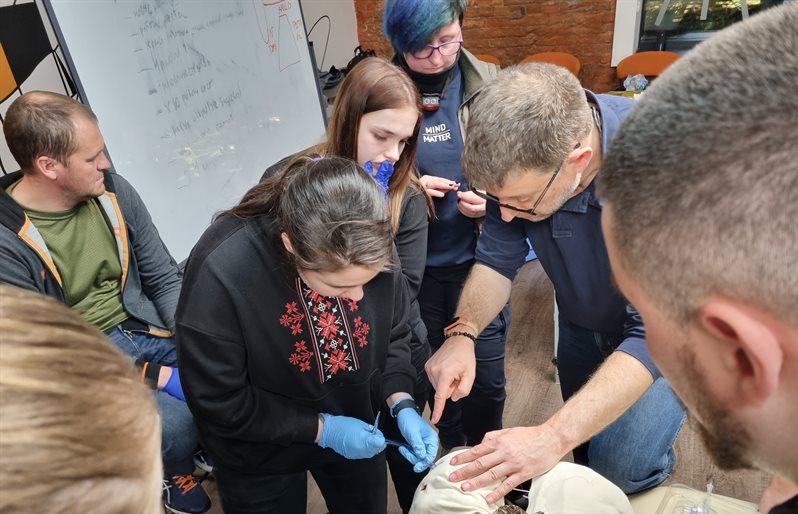Three BSMS students, Kathy Bog, James Chu and Kirsty Lees have been involved in a project to provide medical imaging phantoms for teaching to Ukraine.
Kathy and Kirsty, along with Gianluca Colucci, Consultant General and Colorectal Surgeon and Honorary Clinical Senior Lecturer at BSMS, and Dr Nicholas Tovell, Head of Simulation and Essential Clinical Skills, University Hospitals Sussex NHS Foundation Trust, also donated a weekend to physically create all the materials needed for the phantoms. Gianluca then brought ten models to Ukraine for training medics in Kharkiv in April.

Medical imaging phantoms are objects used as stand-ins for human tissues to ensure that systems and methods for imaging the human body are operating correctly.
Kathy, James and Kirsty became involved in the project after their Individual Research Projects (IRPS) which they undertake as part of Year 4 at BSMS.
Commenting on the project, Gianluca said: “It felt so good to see an IRP project in action and potentially saving lives. What the students did is inspirational and they should be really proud. I’d also like to thank Dr Willer, the creator of the ADAM gel used to make the models, and Dr Tovell for his support in the project.”
Kirsty Lees said "James and I worked really hard on this project for the past several months I'm so happy that we've managed to extend its reaches to deliver international training in Ukraine, Uganda and soon Turkey. Gianluca and his family gave up their Saturday in their family home for Kathy and I to run a cooking day to make the models. I'm glad they made it to Ukraine and pleased he made it home safely! Gianluca has sacrificed his annual leave time to go into this war zone, I know he is an incredibly skilled clinician and am grateful to be able to have shared some of his experiences."
Feedback from some of the Ukrainian medics who took part in the teaching session included: “Being given these models for practicing cannula placement is wonderful and realistic at representing arteries and veins. This allows students/doctors to understand the difference between them under the ultrasound and to practice placing a cannula into a vein. These models can significantly increase the understanding of the procedure and improve skills of its performance. That can lead to changes in the promptitude of treatment and save many lives.”